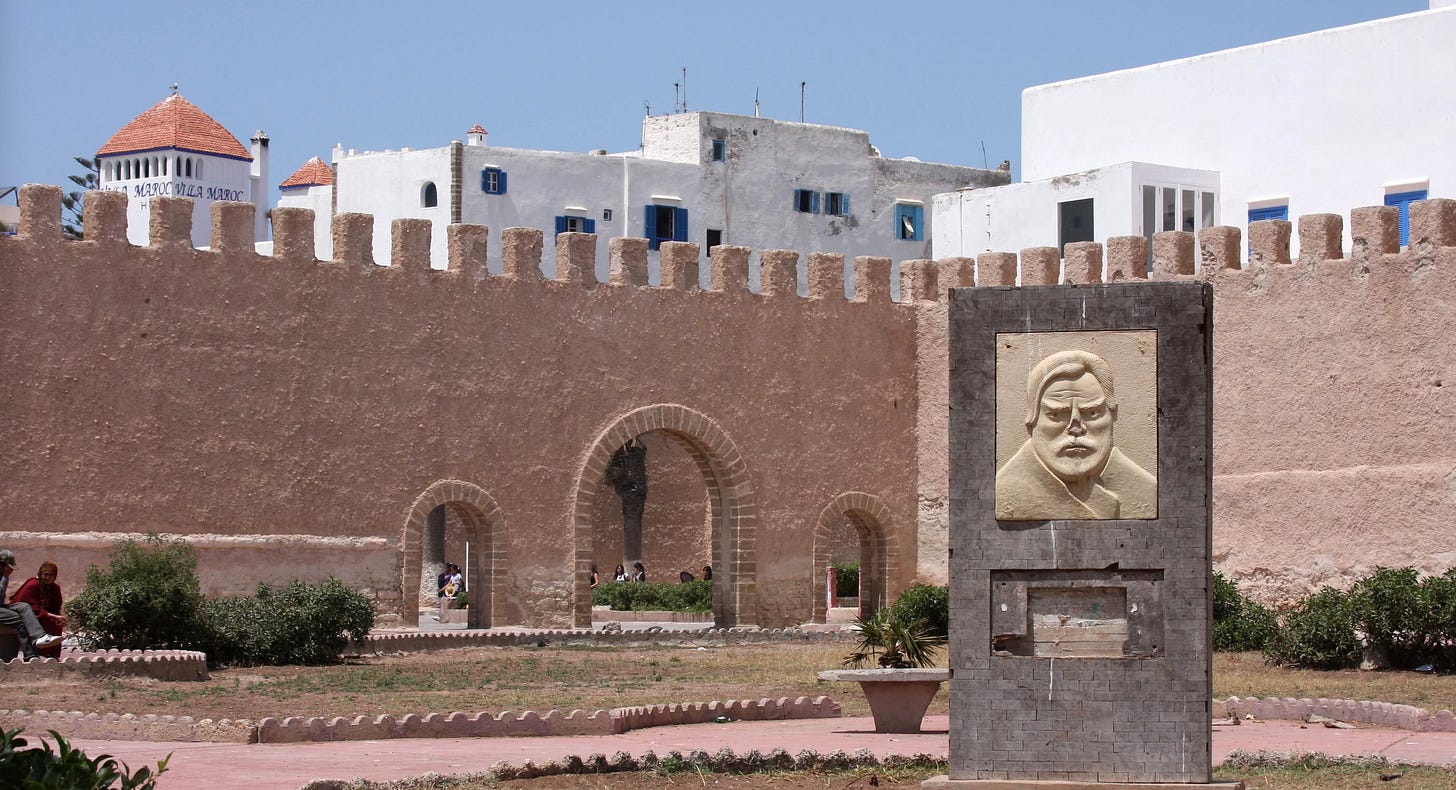In the coastal city of Essaouira, Morocco, a monument stands in tribute to the legendary filmmaker Orson Welles, commemorating his connection to the city through his 1951 adaptation of Shakespeare’s Othello. This monument is located in Place Orson Welles, a small square situated just outside the medina walls near the sea.
The monument features a bas-relief sculpture of Welles, set within a stone pedestal. While it honors his cinematic contributions, the statue has experienced wear over time, with some reports noting that it has been subject to graffiti and damage.
The story of Orson Welles making Othello in Morocco is one of the most chaotic, creative, and ultimately triumphant episodes in film history—a tale worthy of Shakespeare himself.
The Chaos Behind the Camera: Orson Welles’ Othello in Morocco
In 1949, Orson Welles, already a legend for Citizen Kane, arrived in Essaouira, Morocco (then known as Mogador), searching for a dramatic setting for his next passion project: a film adaptation of Shakespeare’s Othello.
But Welles didn’t just shoot a film—he embarked on a four-year odyssey filled with financial ruin, improvisation, and genius.
The Vision
Welles wanted to make Othello not as a stiff theatrical piece but as a visually arresting, exotic, and cinematic epic. Morocco, with its windswept coastlines, fortress walls, and ancient architecture, gave the play a raw, elemental quality.
He cast himself as Othello (in blackface, as was common in that era), and hired a largely European cast, including Micheál MacLiammóir as Iago and Suzanne Cloutier as Desdemona.
The Problem: No Money
Production began in Morocco and Italy with barely any funds. Welles was constantly running out of money, shutting down the shoot for weeks or months at a time. During these breaks, he’d take acting gigs—like playing Harry Lime in The Third Man—to finance the next round of shooting.
Costumes were pawned, sets were reused, and scenes were rewritten to work with what was available.
At one point, he shot a major murder scene in a Turkish bathhouse because the original set was unavailable. There were no costumes, so the actors wore towels.
The Improvisation:
Welles often filmed without sound to save money and dubbed everything later.
He edited the film over three years, hiding reels in hotel rooms and suitcases.
He rewrote Shakespeare liberally, cutting and reshaping scenes to fit locations and budget.
Despite the chaos, he created stunning sequences—Desdemona’s death by candlelight, shadow-drenched ramparts, waves crashing over betrayal—with limited resources but maximal style.
The Triumph:
Despite the madness, Othello premiered at the Cannes Film Festival in 1952, where it won the Grand Prix (top prize, equivalent to the Palme d’Or).
Critics were stunned. While purists debated Welles’ alterations, others called it a masterpiece of guerilla filmmaking.
Legacy in Essaouira:
Essaouira never forgot him. The city named a square in his honor—Place Orson Welles—featuring a weathered statue commemorating the film. Though modest, it stands as a tribute to his creative vision and the wild ambition that brought Shakespeare’s tragedy to life amidst sea spray and Moroccan light.
Welles on Othello
“I started at the top and worked my way down,” Welles once quipped, describing his career.
But with Othello, he proved that even scraping the bottom, he could pull off brilliance.
Until we meet again, let you conscience be your guide






Parallel universes, I saw Elephants Memory at the Fillmore East around 1968, All those show billings remind me of taking acid, tripping all day and then listening to that music on FM radio to help chill the crash. Lived in Tuscon around 1997 working at Canyon Ranch as the Demonstration and Teaching Chef.
Well, you certainly make me want to watch this film as I have never seen it. Gracias!